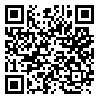Volume 12, Issue 2 (9-2025)
Human Information Interaction 2025, 12(2): 0-0 |
Back to browse issues page
Download citation:
BibTeX | RIS | EndNote | Medlars | ProCite | Reference Manager | RefWorks
Send citation to:



BibTeX | RIS | EndNote | Medlars | ProCite | Reference Manager | RefWorks
Send citation to:
bouazzar S, Ghorbani A, Ounagh N. Investigating the relationship between the use of virtual social networks and cultural capital with social capital in high school students of Ahvaz. Human Information Interaction 2025; 12 (2)
URL: http://hii.khu.ac.ir/article-1-3217-en.html
URL: http://hii.khu.ac.ir/article-1-3217-en.html
Abstract: (791 Views)
Aims: This study investigates the relationship between the use of virtual social networks and both cultural capital and social capital among high school students in Ahvaz, Iran. Method: A descriptive-survey research method was employed, with the statistical population consisting of all high school students in Ahvaz. Using Cochran’s formula, a sample of 320 participants was selected through multi-stage random cluster sampling. Data were collected using Bourdieu’s social capital and cultural capital questionnaires, along with Lee’s (2005) virtual networks usage scale. The data were analyzed using SPSS software. Finding: The findings revealed a significant positive correlation between the components of usefulness, compatibility, social influence, and perceived enjoyment and the variables of social capital and cultural capital. Specifically, virtual social networks enhance individuals' social and cultural capital by improving adaptability, reinforcing social influence on behavior, increasing perceived enjoyment, and maximizing the perceived utility of these platforms. Furthermore, the results indicated that both virtual social network usage and cultural capital can predict the level of social capital among high school students in Ahvaz. Conclusion: Leveraging the potential of social networks can effectively increase students' cultural and social capital.
Send email to the article author
| Rights and permissions | |
 | This work is licensed under a Creative Commons Attribution-NonCommercial 4.0 International License. |



